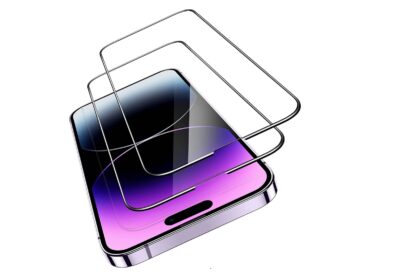This article gives clear, fast steps for when your screen stops responding. You’ll learn safe checks to try first so you protect files and avoid data loss. The guide stays friendly and practical for Mac users in the United States.
Start by saving work with Cmd + S, quitting apps, and safely ejecting external drives. If the system is fully unresponsive, you can hold the power button for about 10–12 seconds until the screen goes black, then wait a few seconds before restarting.
We also cover keyboard sequences that try a safer shutdown and an immediate one, when a force action is needed, and why cooling the machine briefly helps. After you restart, run Safe Mode, use Disk Utility First Aid, and consider Apple Diagnostics if problems persist.
Follow these steps carefully to reduce the chance of lost work, and keep this short guide handy so you can act fast the next time your Mac freezes.
Why your Mac freezes and what this How-To Guide will cover
Understanding why a Mac freezes makes the fix much easier. Common triggers include low RAM, outdated software, poorly optimized programs, overheating, and failing hardware like a worn disk drive. Occasional stalls are normal, but frequent freezing points to a deeper system issue.
Before using power methods, try a normal shutdown from the Apple menu if the cursor still moves. Close apps one at a time and back up important data regularly to avoid loss.
- Resource limits and software conflicts often cause slow performance and unresponsive behavior.
- Keeping macOS and apps current fixes many compatibility problems.
- Heavy programs and background tasks can overload memory; monitor what runs.
- Overheating and failing components are warning signs you should not ignore.
This article lays out clear steps and practical tips to protect data, how long to hold buttons, and when a quick restart helps versus when diagnostics are needed. Expect guidance that works across laptops and desktops so you can act quickly when the device stalls.
Before you force it: quick safety checks to protect your data
When the pointer still responds, take a moment to protect open work. These steps help the system close apps cleanly so disk writes finish and you cut the chance of file damage.
Use the Apple menu if the cursor works
If you can move the pointer, open the Apple menu and choose Shut Down. A normal shutdown reduces risk compared with a hard cut of power.
Save and quit applications
Press Command + S to save active files in each app. Then quit programs with Command + Q.
If one application stays stuck, press Option + Command + Esc, select the app, and confirm Force Quit.
Safely eject external drives
Protect files on an external drive by dragging its icon from the Desktop to the Trash or clicking the Eject icon in Finder. This ensures pending writes complete before power is removed.
- Repeat key commands patiently if input is slow; avoid rapid tapping.
- These quick steps give the system a chance to flush caches and finish write operations.
- If the menu and pointer stop, move to emergency methods next.
| Action | When to use | Benefit | Risk if skipped |
|---|---|---|---|
| Apple menu → Shut Down | Pointer works | Safe closure of apps and services | Lower chance of file corruption |
| Command + S / Command + Q | Any open files or apps | Save work and close programs cleanly | Unsaved files may be lost |
| Option + Command + Esc | One app is unresponsive | Targeted quit without reboot | May not resolve system-wide freezes |
| Drag drive to Trash / Eject in Finder | External drives connected | Completes pending writes to the drive | Drive corruption, longer repairs later |
3 Ways to Restart or Force Shut Down Any Frozen Mac
When your Mac stops responding, use a methodical approach that starts with the least invasive option. Below are three tested methods that work across laptops and desktops. Pick the gentlest first to protect files.
Hold the power button until the screen goes black
Press and hold the power button for about 10–12 seconds until the screen turns off. After the screen is black, wait 5–10 seconds before pressing the button again to restart.
Use keyboard shortcuts for safer or immediate shutdown
For a safer shutdown that tries to close apps, press Control + Option + Command + Power and hold until shutdown begins. If that does not work, press Control + Command + Power and keep holding for an immediate, faster force power off.
As a last resort: drain battery or unplug desktop power
If the device ignores both methods, remove power from a laptop and let the battery drain, or unplug a desktop briefly. This is risky and can cause data loss, so use it only in extreme cases and let the machine cool for a few minutes before restarting.
| Method | How long | When to use | Risk |
|---|---|---|---|
| Hold power button | 10–12 seconds; wait 5–10 seconds | System totally unresponsive | Possible unsaved file loss |
| Control + Option + Command + Power | Hold until shutdown starts | Prefer safe app closure | Lower risk than immediate cut |
| Control + Command + Power | Hold until power off | Emergency immediate shutdown | Higher chance of data corruption |
| Battery drain / unplug desktop | Until power clears or battery dies | When no key or button works | High risk; use only as last resort |
Using the power button the right way
If the pointer and menus are frozen, a calm, deliberate press hold on the power key is the safest hard method.
Where the button lives:
- On MacBook and MacBook Pro laptops the power button or Touch ID sits at the top-right of the keyboard. Touch Bar models use Touch ID on that far-right corner as the power control.
- iMac users will find the key behind the lower-left back edge of the display.
- Apple Magic Keyboard has the power key at the top-right corner.
How long and what to watch for
When the system is stuck, press and hold the power button for about 10–12 seconds until the screen goes black. Wait 5–10 more seconds, then tap the key once to start.
If the display was already dark, keep holding until the apple logo or logo appears during startup. Avoid rapid taps; steady pressure registers correctly.
| Device | Button location | Hold time |
|---|---|---|
| MacBook / MacBook Pro | Top-right keyboard / Touch ID | 10–12 seconds |
| iMac | Rear, lower-left edge of display | 10–12 seconds |
| Magic Keyboard | Top-right key | 10–12 seconds |
After shutdown, let the machine cool briefly. Fans should stop and lights go off before you try a new start. This protects the hard drive and other parts.
Keyboard shortcuts to shut down or force restart
When menus stop responding, a few key combos can tell the system to close apps safely.
Safer combo that closes applications first
Press Control + Option + Command + Power and hold until shutdown starts. This signals the system to ask running applications to quit before power is removed.
Emergency immediate shutdown
If the system is deeply stuck, press Control + Command + Power and keep holding until the unit powers off. This is faster but carries a greater risk to open files.
Tips if the pointer won’t move
- Use Command + Tab to cycle focus to another app, then try normal quit.
- If one app refuses to close, press Option + Command + Esc to open Force Quit and select the offending app.
- Keep steady pressure on the keys or power button for a few seconds so the command registers.
| Shortcut | When to use | Hold time | Notes |
|---|---|---|---|
| Control + Option + Command + Power | Try first for safe app closure | Hold until shutdown begins | Best for protecting application data |
| Control + Command + Power | Use when system is unresponsive | Hold until power off | Faster, higher risk to files |
| Command + Tab / Option + Command + Esc | Pointer frozen but keys work | Tap / hold as needed | Try switching apps then Force Quit if needed |
Draining the battery or removing power when nothing else works
If every key combo and the button fail, cutting external power is a last-resort option. Use this path only when you have tried the safer steps and cannot revive the system with the power button or keyboard commands.
On a laptop: unplug the charger and let the battery run down fully. New MacBook Air and Pro batteries are sealed, so this can take hours. Do not attempt to open the case; wait for the charge to expire.
On a desktop: remove the power cable from an iMac, Mac mini, or Mac Pro. This forces an immediate stop but risks corrupting files and losing unsaved work.
- Only consider this method after other options fail and you’ve secured what you can.
- After power is removed, let the unit cool for a few minutes before reconnecting power.
- Disconnect peripherals during the process to lower the chance of external device conflicts.
| Type | Action | Risk |
|---|---|---|
| laptop | Unplug and allow battery drain | Data loss if apps were writing files |
| desktop | Unplug power cable | Possible disk corruption |
| afterward | Reconnect and run disk checks | Can catch and repair issues |
Note: This method bypasses the system’s ability to close processes. If you must use it more than once, treat it as a sign of deeper instability and run diagnostics as soon as the unit restarts.
What to do after a forced shutdown
After an emergency power cut, take measured steps before you resume work. These checks confirm the startup volume is safe and reveal whether the problem is software or hardware.
Boot in Safe Mode
Power on and hold Shift until the apple logo appears. Safe Mode checks the startup disk and loads only essential software and drivers.
If the system runs well in Safe Mode, a login item or extension likely caused the issue. If it still stalls, the disk or deeper software may be at fault.
Run Disk Utility First Aid and watch app behavior
Restart while holding Command + R to enter Recovery. Open Disk Utility, select the startup disk or Data volume, and run First Aid.
After First Aid finishes, restart normally and verify your files open and apps behave as expected. Inspect recently used files for partial writes if you used an emergency power method.
Use Apple Diagnostics if problems persist
On Apple silicon, press and hold the power button to reach startup options, then press Command + D. On Intel Macs, hold D (or Option + D) at startup.
Diagnostics target memory, logic board, and other hardware. Note any error codes and keep peripherals disconnected while testing.
- Keep external drives unplugged during tests to isolate conflicts.
- If diagnostics report faults, contact Apple Support and share codes for faster help.
- After these steps, decide whether repair or further troubleshooting is needed.
| Step | How | Purpose | Next action |
|---|---|---|---|
| Safe Mode | Power on, hold Shift until apple logo | Check startup volume and limit software | Note if system is stable |
| Disk Utility First Aid | Restart, hold Command + R, run First Aid | Repair disk directories and find errors | Restart and test files/apps |
| Apple Diagnostics | Apple silicon: power hold → Command + D; Intel: hold D/Option + D | Identify hardware faults (memory, board) | Record codes and contact support |
Prevent future freezes with smart maintenance
Keep your Mac running smoothly by scheduling small maintenance habits each month. These quick actions help protect data and keep system performance steady.
Keep software current and limit startup programs
Install updates via System Settings > Software Update. Updated software and apps fix bugs that cause slowdowns.
Trim login items in Users & Groups so fewer programs start at boot. Fewer autostart items speeds startup and lowers background load.
Watch heavy processes and free disk space
Open Activity Monitor to find demanding apps and quit them when they spike CPU or memory. This tool shows CPU, memory, and energy use at a glance.
Keep at least 10–15% free on the startup disk. Move large files to an external drive and run Disk Utility First Aid if you suspect corruption.
Back up and scan if freezes recur
Use Time Machine or cloud backups so critical files and data stay safe. If stalls return, run a reputable malware tool to check for malicious processes.
| Task | How | Benefit |
|---|---|---|
| Update software | System Settings > Software Update | Improved security and stability |
| Trim login items | Users & Groups > Login Items | Faster boot and lower background load |
| Monitor Activity Monitor | Check CPU/Memory tabs | Identify heavy apps affecting performance |
| Free disk space & First Aid | Keep 10–15% free; run First Aid | Reduce corruption risk and improve disk health |
Conclusion
If your screen locks or an issue appears, keep calm and follow a clear sequence.
First try the menu for a normal shut mac, save open files, and eject drives before you escalate.
If that fails, use the button hold or the safer keyboard combo, and reserve harsher steps for true emergencies.
Only cut external power as a last resort, then boot in Safe Mode and run First Aid on the disk to check the system.
After recovery, update software, trim login items, and free space so the next problem costs less time and the computer stays more stable.
FAQ
How can I safely shut my Mac if the cursor still moves?
If the cursor moves, first try the Apple menu > Shut Down. If apps are unresponsive, save work with Command + S, then quit apps. If that fails, use Control + Option + Command + Power to close apps and restart without risking open files.
What if the screen is frozen and the mouse doesn’t respond?
Try keyboard tricks: press Command + Tab to switch apps or Option + Command + Esc to force-quit the front app. If nothing reacts, hold the power/Touch ID button for about ten seconds until the display goes black, then wait a few seconds and press it again to start up.
Where is the power/Touch ID button on different Macs?
On MacBook Air and MacBook Pro models the power button doubles as Touch ID at the top-right of the keyboard. iMacs place the power button on the back or lower-right edge. Apple keyboards for desktops have a power key at the top-right. Knowing the exact spot speeds emergency actions.
How long should I hold the power button to force a shutdown?
Press and hold for about ten seconds until the screen goes black. Let the machine sit for a few seconds after power off, then press the button briefly to restart. This hard shutdown clears the system when other methods fail.
What keyboard shortcuts close apps or force a restart?
For a safer close of apps and restart use Control + Option + Command + Power. For an immediate emergency shutdown use Control + Command + Power. If a single app is frozen, Option + Command + Esc opens Force Quit.
Is it safe to let the battery drain or unplug an iMac as a last resort?
Draining the battery or cutting power risks data corruption on drives and should be the last resort. Try all shutdown and keyboard methods first. If you must, unplug the desktop or let the laptop die only when no other option works and you’ve exhausted safer steps.
What should I do right after a forced shutdown?
Restart in Safe Mode to let macOS check the startup disk and block problematic extensions. Run Disk Utility First Aid to repair the drive, then open apps one at a time to spot the culprit. If freezes continue, run Apple Diagnostics or contact Apple Support.
How can I reduce the chance of future freezes?
Keep macOS and apps updated, manage login items, and monitor CPU and memory with Activity Monitor. Free up storage space, back up regularly with Time Machine, and scan for malware if problems recur. Regular maintenance prevents many freezes.
Will a forced shutdown harm my files or the hard drive?
A single forced shutdown usually won’t damage hardware, but it can corrupt open files or active write operations. That’s why saving work and attempting softer shutdown methods first matters. After a forced power-off, run Disk Utility to check and repair the disk.
When should I contact Apple Support or visit an Apple Store?
Contact Apple if freezes continue after Safe Mode, Disk Utility, and diagnostics, or if you suspect hardware faults like failing SSD/HDD or overheating. Persistent freezes during startup or repeated crashes are signs a technician should inspect the device.
























